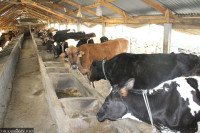Money
NEA overusing water of Kulekhani reservoir
The water level at the Kulekhani reservoir has dropped sharply after the Nepal Electricity Authority (NEA) drew more water than usual to crank up power generation and ensure that load-shedding didn’t go over 13 hours daily.
The water level at the Kulekhani reservoir has dropped sharply after the Nepal Electricity Authority (NEA) drew more water than usual to crank up power generation and ensure that load-shedding didn’t go over 13 hours daily.
The reservoir at the 92 MW hydropower project has shrunk by 9 metres, the steepest fall in three-four years, said Bhuwan Chhetri, chief of the NEA’s Load Dispatch Centre. The water level was also low this year due to poor rainfall.
According to Chhetri, the water level dropped by 6 metres in a single month (mid-January to mid-February). “Last year, the water level had gone down by only 1.5 metres,” he said.
NEA officials said that they had used the power generated by the Kulekhani plant heavily this year after being assured that there would be an agreement with India for more power.
Nepal started receiving 80 MW of electricity from Wednesday after the NEA and India’s NTPC Vidyut Vyapar Nigam signed an agreement to import power through the 400 kV Dhalkebar-Muzaffarpur cross-border transmission line.
Prime Minister KP Sharma Oli and Indian Prime Minister Narendra Modi inaugurated the increased power supply in New Delhi on Saturday. The power supply through the transmission line will be increased to 200 MW by October 2016 and to 600 MW by December 2017.
Meanwhile, the NEA has reduced the day-time power outage duration that was being imposed outside the schedule after additional power was received from India.
The authority was taking a risk by drawing more water from the Kulekhani reservoir amid swelling demand.
Keeping the water level at Kulekhani at a high level is important to maintain sustained power supply because it is the only reservoir-type project in the country. Run-of-the-river type projects produce less electricity during the winter when the water level in the rivers decrease.
According to Chhetri, the NEA would have been forced to increase the power cut to at least 16 hours daily if extra power had not been imported from India. Nepal was receiving 230 MW from India before another 80 MW was added recently.
The total power available in the system is 500 MW while the domestic requirement amounts to 1,325 MW during peak hours. The power crisis worsened this year as some of the hydropower projects delivering 70 MW of electricity to the NEA were damaged by the earthquake, according to NEA.
The 45 MW Bhote Koshi, 10 MW Sipring and other smaller power projects went dead after the earthquake. “Load-shedding would not have gone over 10 hours daily if these plants had not been damaged by the tremor,” said Chhetri.




 10.12°C Kathmandu
10.12°C Kathmandu














